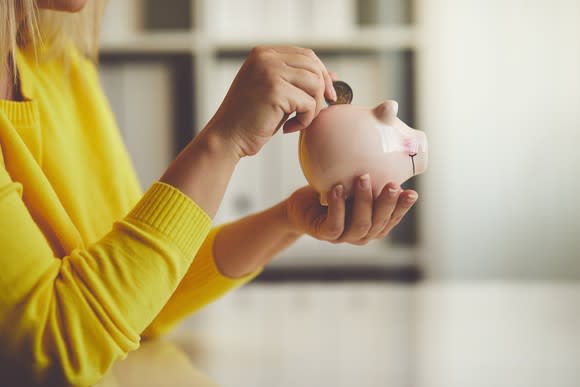You Won’t Believe How Many Americans Have Less Than $1,000 in Savings
We all need savings to protect ourselves from life's financial unknowns, whether that means losing a job, having a car break down, or dealing with a major home repair. Unfortunately, most Americans are in pretty bad shape when it comes to emergency savings. In fact, an estimated 58% have less than $1,000 in the bank, according to new data from GOBankingRates.
What further compounds this issue, however, is that last year, 57% of U.S. adults said the same thing. And while we're only talking about a one-percentage-point difference, the takeaway here is that Americans on the whole aren't getting smarter about socking away some cash. And if they don't change their ways, they risk wrecking their finances irreparably.

IMAGE SOURCE: GETTY IMAGES.
The danger of not having savings
We all know that it's virtually impossible to predict what expenses might come our way. But without some sort of safety net, you'll be putting yourself in a position in which you're forced to rack up debt (and damage your credit score in the process) to cover an unanticipated bill.
So how much money should you have on hand for emergencies? Sadly, $1,000 won't cut it. Generally speaking, it's a good idea to have three to six months' worth of living expenses tucked away in the bank. If you happen to only spend $333 a month, then sure, go ahead and say that $1,000 is your optimal savings target. The reality, however, is that $1,000 is probably only a fraction of what you spend in a single month. And the fact that more than half of Americans don't even have that much means that collectively, we're looking at a serious savings crisis.
Padding that bank account
If your savings level isn't where it should be, you'll need to do better. And there are several avenues you can take to get there.
First, create a budget if you don't have one already, see what you're currently spending money on, and find ways to cut back. You might choose to lower one major expense, like your rent or car payment, or make a few smaller changes, like canceling your gym membership, packing lunch for work instead of buying it, and trimming your cable plan.
Next, look at getting a side hustle. These days, a good 44 million Americans do additional work on top of their regular jobs, and while doing so will clearly eat into your downtime, it's also a good way to put extra cash in your pocket. In fact, it's estimated that 36% of workers with a side hustle bring home an extra $500 or more per month as a result. And that's certainly a worthwhile payoff.
Finally, don't hesitate to fight for a raise at work if you feel you're underpaid. If you do some research and find that you're earning less than the average person in your area with your job title, you can present that data to your boss and make the case for a boost. This especially holds true if you're a strong performer who's consistently gotten great performance reviews and solid feedback.
Amassing an emergency fund with three to six months of living expenses is something that most certainly takes time. Saving up $1,000, on the other hand, is a different story. In fact, if you're able to work a side hustle and really cut back on extras in your budget, there's a good chance you'll hit that target in a month or two. Of course, you don't want to stop at that $1,000 -- but getting there sooner rather than later is a good goal to strive for.
More From The Motley Fool
The Motley Fool has a disclosure policy.

 Yahoo Finance
Yahoo Finance 